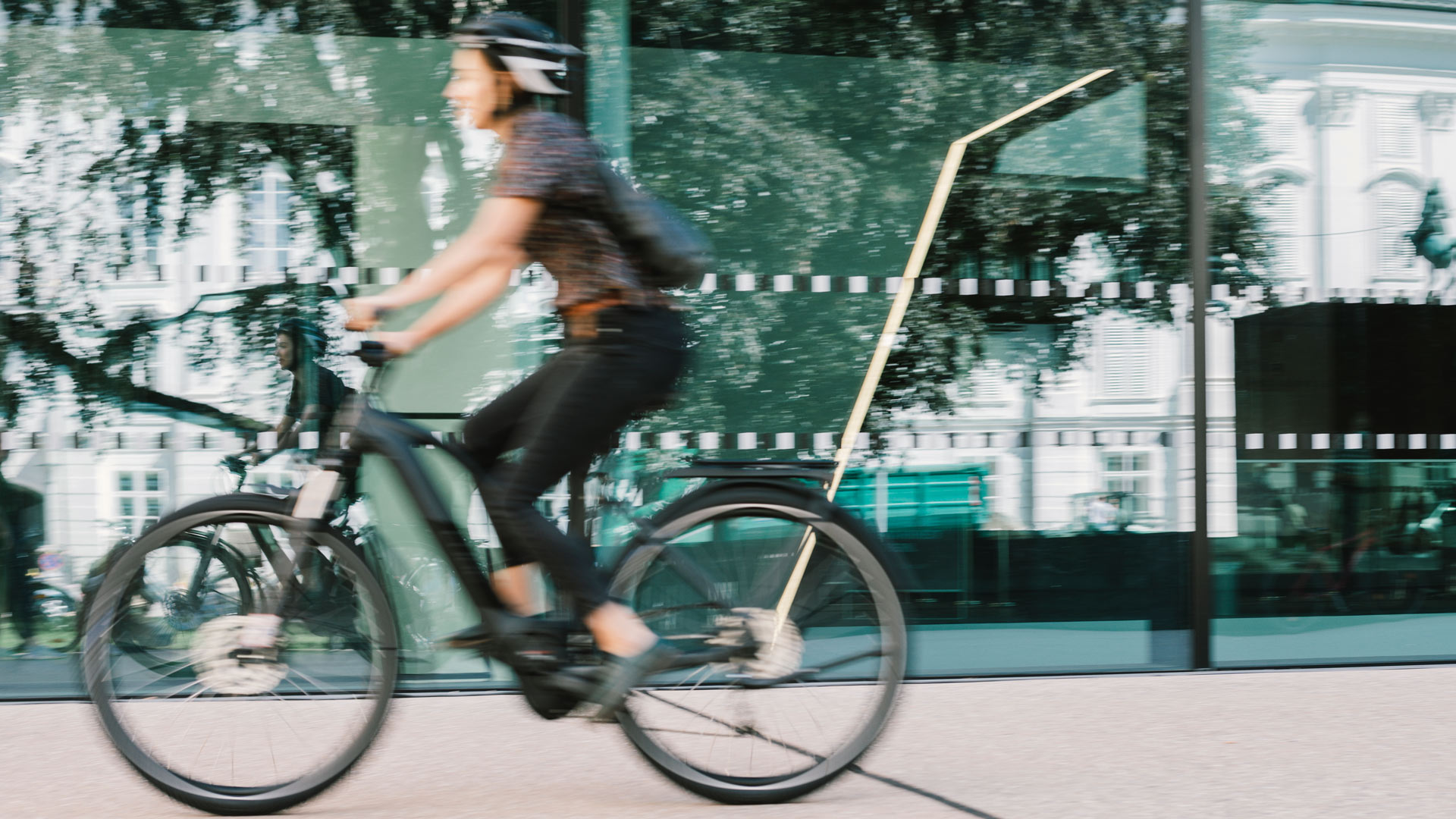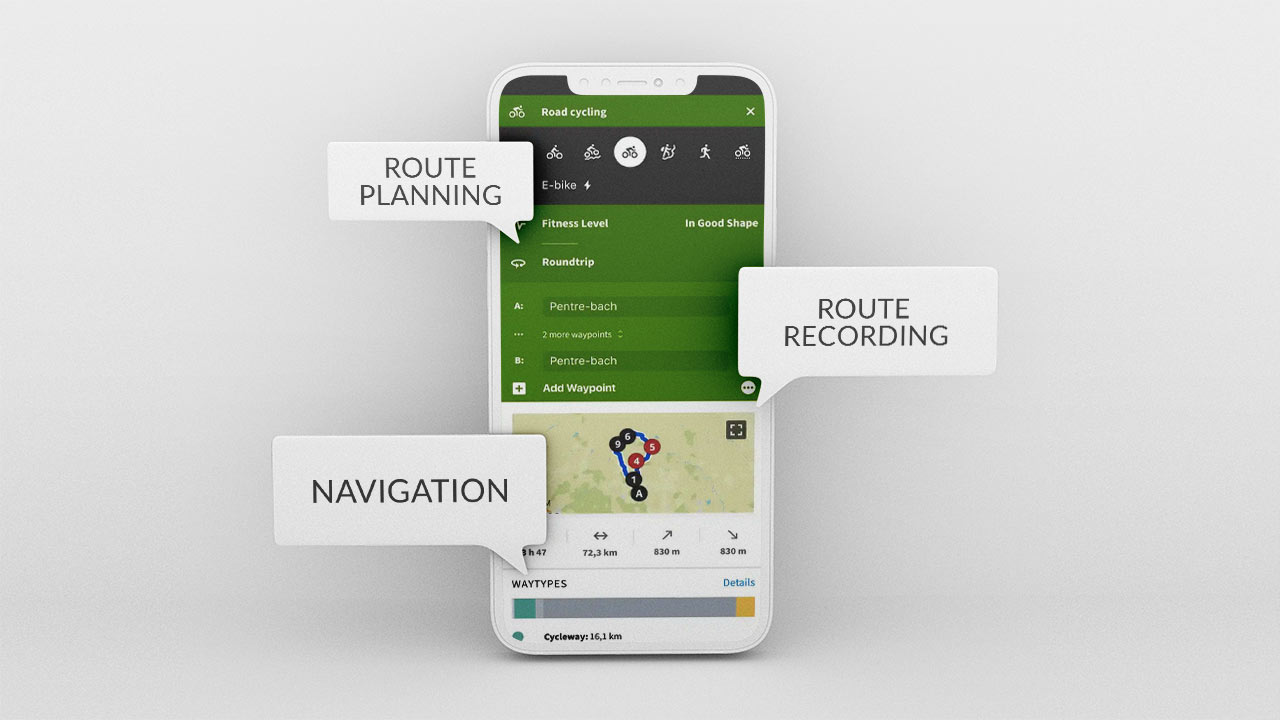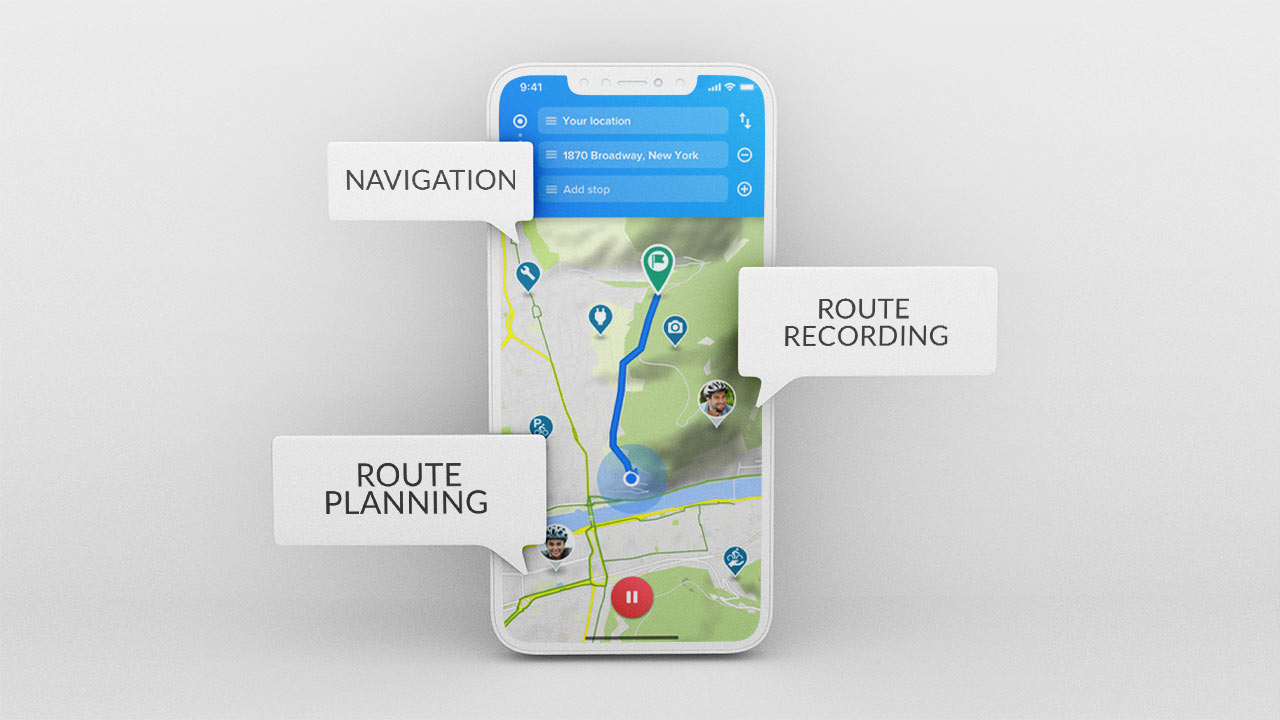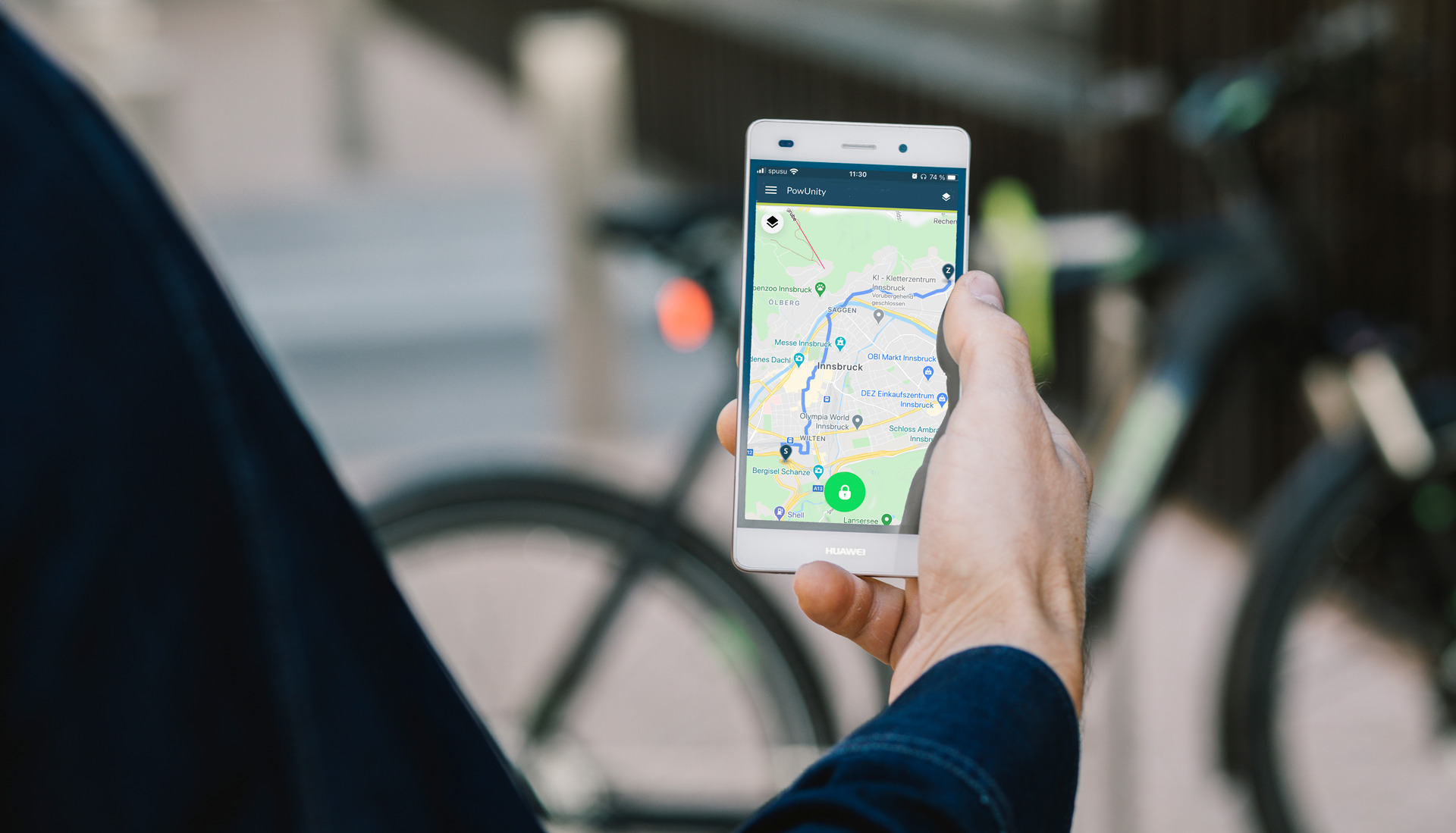- Free shipping from 220€The order of accessories (without BikeTrax) is excluded from the free shipping costs.
Inhalt
About public charging stations for e-bikes in a nutshell
- Charging stations for e-bikes differ according to the type of construction and the charging process. Sometimes you have to remove the battery to charge it.
- The number of public charging stations has increased significantly in recent years. Nevertheless, we recommend that you find out where you can charge your bike before a tour.
- Various e-bike apps show you charging options and navigate you directly there. However, they only find a part of the existing charging stations. In addition, the information about them is often outdated.
- The best way to protect your e-bike from theft during hours of charging is to use the BikeTrax GPS tracker. This way, you can relax and go out to eat while the battery charges.
E-bikes are made for long tours. But there is one catch: at some point, every battery needs to be charged. But a back-up battery is neither cheap, nor light. Therefore, charging stations at commercial and municipal locations are a good solution.
But how do you find e-bike charging stations on your route, how does charging work and what else should you look out for? You will find all the answers below.
How e-bike charging during a bike trip works
First of all, the good news is that the number of charging stations for electric bikes has been rapidly increasing in recent years. On popular routes, you will find them at regular intervals at rest stops, petrol stations, restaurants or even museums.
Nevertheless, we recommend that you inform yourself in advance, especially if you are travelling off the well-known routes.
Important to know:
- Charging an e-bike from 0 to 100 percent takes longer than charging an electric car. You should expect at least three hours. Sometimes it can be even five hours. It’s best to use the charging break for an extended coffee or lunch. As more and more restaurants offer charging stations, you can easily combine the charging with a lunch break. Alternatively, you can also go sightseeing while your electric bike is charging.
- Despite the rise in electricity prices, the cost of ebike battery charge is very low or even for free.
- Make sure to bring your own charging cable. There is still no uniform standard that all charging stations support. You should also not rely on the fact that there will be a suitable cable available for rent.
What types of charging stations exist?
E-bike charging stations (i.e. commercial, public and domestic charging stations) can be divided into two variants according to the type of charging process:
- Lockers for e-bike battery and charging cable: To use such charging points, you first have to remove the rechargeable battery. In return, it is well protected from thieves in the locker. But beware! Sometimes you need a coin to open and lock the locker, which is a good reason to bring some change for your next tour.
- Bicycle stands with power outlets: A classic is the bicycle stand with power outlets. You can plug your electric bike into the stand for charging. This “kills two birds with one stone”.
- Charging points with one or more power outlets: Are you not the only one with an empty e-bike battery? Charging points with multiple power outlets prevent traffic jams and long waiting times. Sometimes one charging point allows you to charge both e-bikes and e-cars.
- bike-energy charging points: Charging points for e-bikes from bike-energy are characterised by an open standard. This means that you do not need your own charging device, i.e. cable. Instead, you get a cable at the charging station that is compatible with all common drives and e-bikes. This solution provides safe and easy charging and is also waterproof.
- Charging points that are powered by solar panels: This variant is particularly environmentally-friendly.
In general, you can connect any bike with an electric motor to any e-bike charging station if you have the right cable at hand. But different designs of charging points bring different advantages. For instance, a roof is advantageous in bad weather.
Finding charging stations for electric bikes
As you can see, charging e-bike batteries is no magic trick.
But the question “how to find an e-bike charging station during a bike tour” remains.
Well, there are two ways to do this:
- Map: Once you have “mapped out” your route for the next tour, you can print out a map with marked charging points for electric bikes and put it in your pocket. This may be old-fashioned, but it has the advantage that a map works without power.
- App: You use a bike app that shows you charging points. The practical thing about this is that you can navigate directly to the next public or commercial charging stations and find your location on a map without having to stop. Besides, the smartphone is increasingly becoming the control centre for e-bikes. With the right apps, you no longer need a bike computer. You have a device that can do (almost) everything.
Of course, there’s nothing to stop you from combining both: a smartphone app and a map for when your phone runs out of power.
Do you want to do without a bike computer in future? We’ll tell you how to find the best smartphone apps for route planning, navigation, fitness tracking and managing your electric bike in our article The best e-bike app: How to find it | 15 apps in comparison”.
Smartphone apps for finding e-bike charging stations
You’ve decided to go for the smartphone option? At first glance, the selection of apps that display e-bike charging stations is large. At second glance, things don’t look quite so “rosy”.
This is because all currently available apps have the following weaknesses (to varying degrees):
- In tests, all apps find only a portion of the stations that actually exist. Depending on the app, it is a large or small part.
- Some apps primarily show stations for electric cars.
- It is likely that some information, for example about the type of charging station or opening hours, is out of date.
There is no ideal solution. But with the following examples, chances are good that you will find an e-bike charging station when you need it.
komoot
komoot is one of the most popular route planning and navigation apps for outdoor enthusiasts. Its advantages include offline navigation, voice navigation and community features. However, the app is only really worthwhile for ambitious cyclists with a premium subscription, which, apart from promotional periods, is anything but cheap.
E-bike charging stations are also entered as POIs in Komoot. However, this is a very limited number.
outdooractive
Komoot’s biggest competitor is called outdooractive. The similarities between the two apps are large. This starts with the features and includes the price. In the recent past, outdooractive has also moved many useful features into the premium area. In addition, the app scores particularly well in route planning. With offline navigation, you quickly come up against limits.
The same applies to e-bike charging stations as with komoot. Depending on the area, you will find a selection in the app, but you cannot hope for completeness.
Bikemap
Bikemap combines navigation including voice announcements and route planning in an app that is free of charge (at least to a limited extent). In addition to repair shops and restrooms, you can also search for charging points for your electric bike.
While the range of functions is great, Bikemap also has weaknesses in practical tests. Not every user is satisfied with the selection of maps or the accuracy of the navigation.
Apps for car charging stations
Even greater than the number of apps for e-bike charging stations is the number of apps aimed at drivers of electric cars.
And what’s in it for you? It’s simple: apps like Chargemap or Zap-Map also partially cover charging stations for bikes with electric power assistance. Most of the time, you can filter them by power. This is a bit tedious, but a good option if you own different electric vehicles and only want to use one app.
Tip: The popular e-bike app Komoot also shows e-bike charging stations, but only a small part of the actually available ones.
FAQs: Further questions about charging stations for electric bicycles
Are the power outlets at charging stations different?
In most cases, the e-bike connector systems at charging stations are standard “Schuko sockets” like the ones you have at home. However, there are exceptions.
Is an e-bike charging station always open?
It depends. Many e-bike charging stations are located outdoors and are accessible around the clock. For stations in public buildings like museums, you are dependent on opening hours. The same applies to an e-bike charging station in a courtyard, for example. This information is missing in many apps. Therefore, keep this point in mind when searching for charging options.
Can I charge e-bikes in the rain?
f the charging station has a roof, you are independent of the weather. If not, be careful. There is a risk that the power supply unit could be damaged by rain. You can find out whether this is the case by looking at the instructions. For example, e bike connector systems from bike-energy are generally waterproof.
It is also not advisable to expose an ebike battery to direct sunlight. All in all, when a charging station features protection (also for, e.g., outside or indoor installation of bike components), it is always a good thing.
When should I charge my battery at the latest?
It is best not to wait until nothing works and not to charge your e-bike battery completely every time. The ideal charge level is between 20 and 80 percent. Also, don’t leave the battery connected for too long, but disconnect it as soon as your e-bike has enough power.
How do I protect my e-bike from thieves while charging?
Parking your e-bike, plugging in the charging cable and heading for a meal two streets away? You can do that, but only if your bike is well secured. Otherwise you are practically inviting thieves to take advantage of the opportunity.
Ideally, you should follow these tips to protect your e-bike while charging:
- Lock your e-bike to a fixed object with a good lock. Remember: a cheap frame lock is not much better than no lock at all. You can find valuable tips for choosing the right bike lock in our article “Best bike lock with GPS – how to protect your e-bike”.
- Secure valuable components on your bike with HexLox component locks. Otherwise there is a risk that a thief will unscrew them.
- For real theft protection, use the BikeTrax GPS tracker and the PowUnity app. This way, you will be immediately informed by an alarm on your smartphone if someone moves your e-bike without permission during charging. If you are too late, you can track a stolen e-bike in real time anywhere in Europe and report its location directly to the police. This significantly increases the chances of getting your bike back.
Good preparation saves you from unnecessary breaks
On popular bike routes, it is no big problem to find the nearest e-bike charging station. However, especially for longer e-bike tours, thorough preparation is recommended.
You can integrate charging times into your route planning in such a way that you use them, for example, for a longer lunch break or a visit to a sight. For tours off the well-known routes, it is especially important that you know what the charging infrastructure looks like.
Smartphone apps and maps can help you plan your trip. However, keep in mind that both are not error-free. Don’t rely on that one “lonely” charging station in the middle of nowhere.
Speaking of nowhere: Especially if you are travelling in less frequented areas, it is worth taking a back-up battery with you. It is relatively expensive, but the investment pays off in the long run..
Share article!







 Deutsch
Deutsch